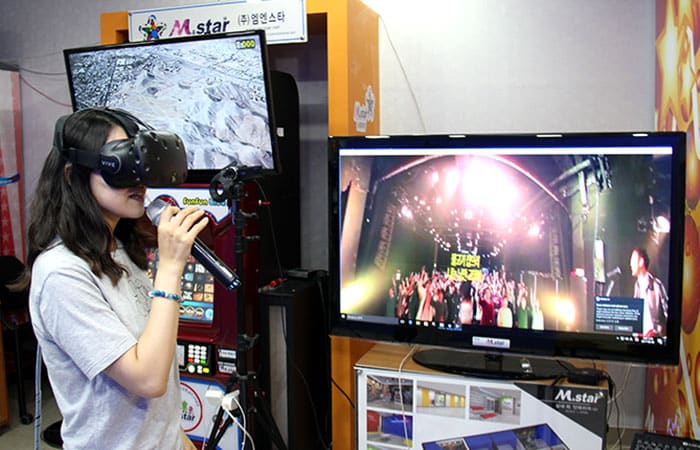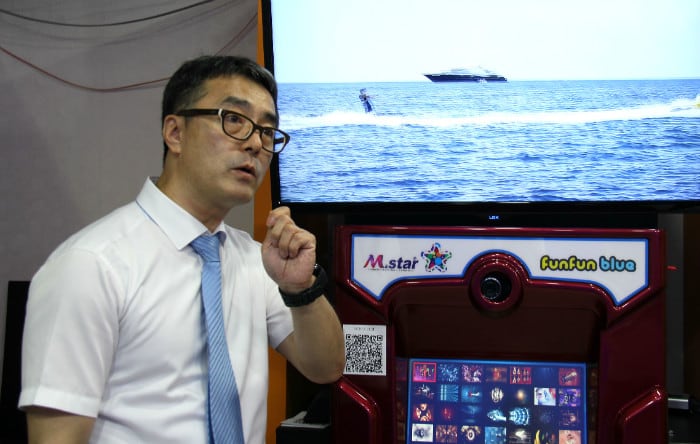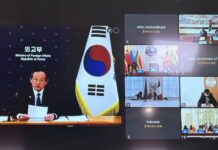
Korea.net writer Son Gina, wearing virtual reality (VR) headgear, sings before a virtual group of cheering fans. The latest karaoke technology integrates VR software in allowing a user to sing favorites in another reality. (Lee Hana)
By Lee Hana and Son Gina
Seoul | June 23, 2017
With a band standing on a brightly lit stage, the singer holds a microphone as music starts to fill a crowded room. Once the singing begins, the fans cheer loudly and wave their arms as the singer’s voice echoes across the stage.
This isn’t the concert of a famous rock star but rather the atmosphere exuded by a virtual reality (VR)-assisted noraebang (karaoke room). Thanks to the application of VR technology, anyone can experience the thrill of being a pop sensation.
This VR noraebang can transport users to the scene of a rock concert, where they can jam with members of their favorite band, or to a studio where backup dancers show off their choreographed moves to an up-tempo K-pop hit. For the duration of the song, the world is the users’ stage.
“Noraebang debuted in Korea over 25 years ago, but other than showing users song lyrics on a screen, little has changed over that time,” said Kwon Joon Eon, vice president of MnStar. His company is behind Sing VR, the first karaoke system in Korea to incorporate VR technology into the fabric of its software.
“With the introduction of this new technology, people can get a completely new experience when they go to noraebang with their friends and family,” he said.

Kwon Joon Eon, vice president of MnStar, the company that developed VR-supporting noraebang software, predicts a bright future for VR technology. (Son Gina)
MnStar’s breakthrough is not without flaws, however. One limitation is that the technology can support one user at a time. Just one person can wear the VR headset, which means that only that person can enter the virtual world. Others in the room can follow the VR user’s field of vision on a TV screen but this is obviously not the same as occupying the same virtual space. For people used to going to noraebang with others for a shared experience, the idea of a single-player game might be a turnoff. Another glitch is that when the VR user’s line of vision fails to align with the lyrics appearing in the virtual space, others in the room will have trouble following the lyrics.
Kwon did admit that his company’s VR noraebang remains in its infancy and is taking baby steps, but expressed optimism over its potential in the years ahead.
“A multi-VR headset allowing two people to occupy the same virtual space at the same time will be released soon. This means that two friends, one based in Seoul and the other in the port city of Busan, can hang out and sing together in a space that’s entirely their own,” he said.
“VR’s foreseeable future includes the ability to stream real-time content so that people in different regions can meet in virtual reality using VR equipment that’s more light and compact. Once that happens, the world will truly become an interesting place.”
While MnStar’s VR noraebang remains in the R&D phase, it is a striking reminder that the Fourth Industrial Revolution is right around the corner with a slew of surprises, complete with technologies that bridge the gap between the real and virtual worlds.
hlee10@korea.kr























